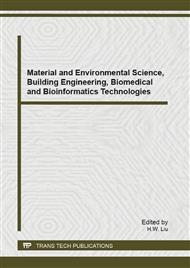p.375
p.381
p.386
p.391
p.396
p.401
p.405
p.410
p.414
Surface Overpressure Distribution and Dynamic Response of the Retaining Wall of the Underground Structure Subjected to Inner Explosion
Abstract:
An underground structure has been in a state of static equilibrium under the combined effect of gravity and the surrounding soils confining pressure before internal explosion occurred, and the blast wave can experience multiple reflections and diffractions in closed space, so the overpressure on the surface of structural members was more complex than that when explosion happened in the open space. In this paper, a finite element model of a closed underground frame structure was established by using the finite element software ANSYS/LS-DYNA. Based on the model, numerical simulation by stages was done to study the overpressure distribution on the surface of the retaining wall. This paper main analyzed the effect of the initial balance stress on the blast overpressure distribution rule and the retaining walls dynamic response.
Info:
Periodical:
Pages:
396-400
Citation:
Online since:
September 2013
Price:
Сopyright:
© 2013 Trans Tech Publications Ltd. All Rights Reserved
Share:
Citation:


